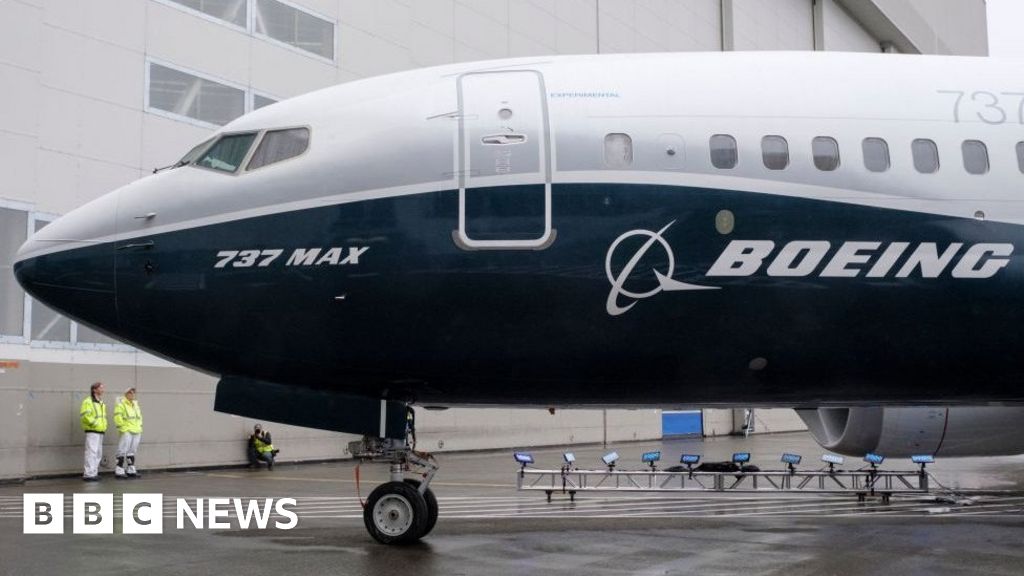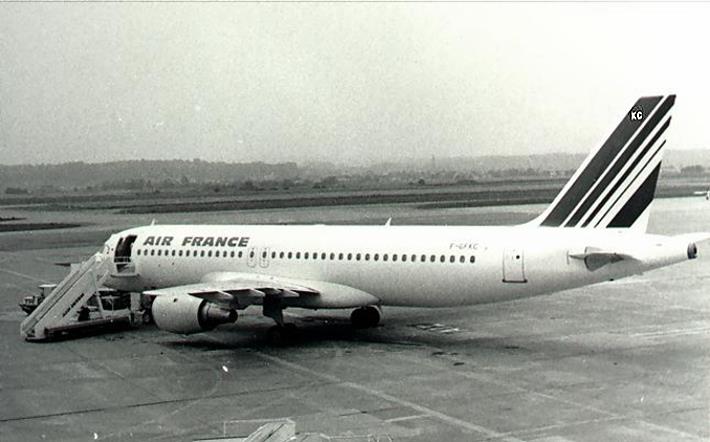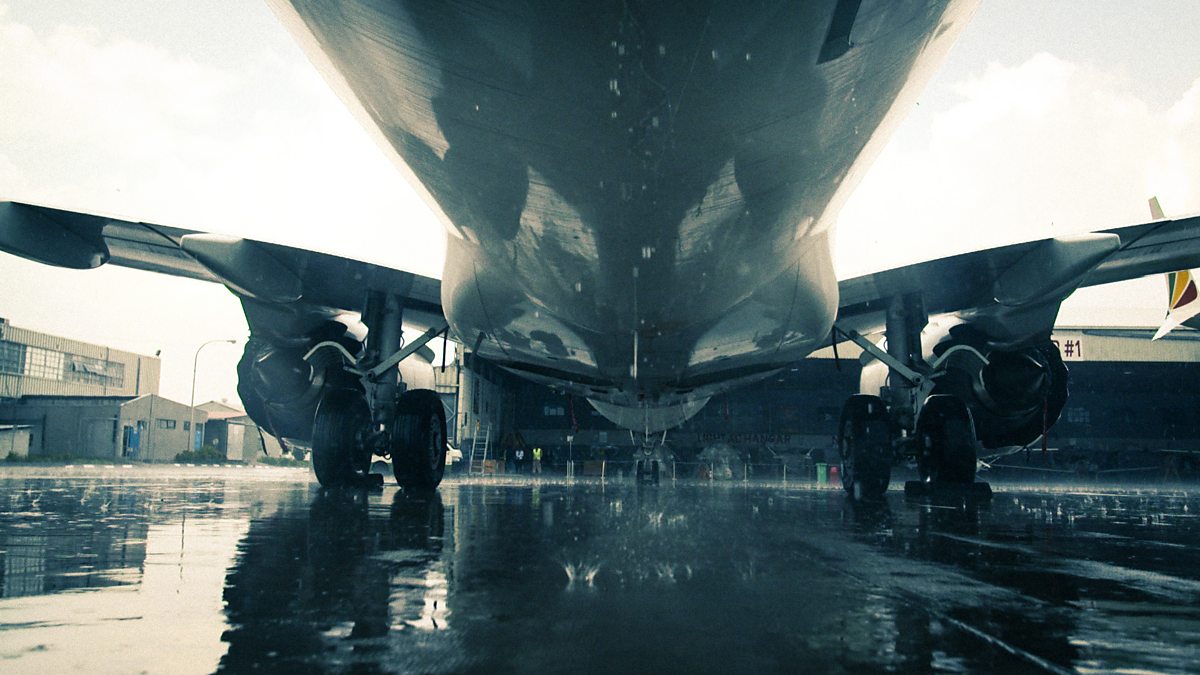You are using an out of date browser. It may not display this or other websites correctly.
You should upgrade or use an alternative browser.
You should upgrade or use an alternative browser.
- Status
- Not open for further replies.
Boeing initially priced the 787-8 variant at US$120 million
Maybe its time to get that line up to speed and dump the MAX.
Or a larger surface tailplane to give more authority in pitch ?
At the minimum adding a third AOA vane could maybe solve the MCAS "which vane data do I use ?!!" problem… And all this involves software rewriting too anyways.
At the minimum adding a third AOA vane could maybe solve the MCAS "which vane data do I use ?!!" problem… And all this involves software rewriting too anyways.
Last edited:
Automatically deployable spoilers/vortex generators around the engines. You need something to kill the engine lift at high AoAs.
Sort of like the roof flap NASCAR cars have now to stop them going airborne when sliding sidewards ?
LMAO
Another nugget from this fantastic(-ly dumb) movie
they are on instruments !
ROTFL
More seriously, this crisis is unbelievable. I have deep respect for Boeing, which made aviation history many times, and I just can't believe, how huge they have blundered on this one, and how damaging it grows, and grows, day after day.
Can this sink Boeing ? I really don't believe it (they survived worse in their history, plus an Airbus monopoly would not be tolerated). How far can it go ?
Last edited:
Less we think Airbus is any better....
 www.theregister.co.uk
www.theregister.co.uk
Airbus A350 software bug forces airlines to turn planes off and on every 149 hours
Patch your darn metal bird, sighs EU aviation agency
- Joined
- 11 February 2007
- Messages
- 2,579
- Reaction score
- 4,398
What would a 'hardware' fix involve ? To my mind, the aircraft still has to fly safe if the software fails again ---
Remember, MCAS is a flying qualities fix, not a flight safety fix. So Max should be flyable without it. It's MCAS driving the tailplane in the wrong direction when it failed that caused the crashes, not something inherent in the Max aerodynamics. So what we need is an MCAS with redundancy and that fails passively, unlike the current iteration. Redundancy means a hardware fix, failing passively is likely a combined hardware/software fix. And similarly for whatever it was FAA discovered.
Edited to add: The other alternative would be to take MCAS out and mandate a separate type rating for Max vs 737 NGs, That's dependent on flight qualities without MCAS being in the acceptable range.
Edited to further add. Being pedantic, the MCAS failures were hardware/systems, not software. The software responded correctly to the signal it was receiving from the failed AoA vane. The failed vane was hardware, the failure to allow for it was systems.
Last edited:
- Joined
- 11 February 2007
- Messages
- 2,579
- Reaction score
- 4,398
Automatically deployable spoilers/vortex generators around the engines. You need something to kill the engine lift at high AoAs.
I've not seen anything that says that's necessary (but if you have then pointers appreciated). Max adopting a different pitch attitude to 737 NGs isn't a safety of flight issue as long as it's within reason, but it's a problem for maintaining a single type rating for both Max and NGs, hence MCAS.
I believe Brain is all about electric signals, doesn't it?
Not only... think you too need a third AOA vane .
Last edited:
- Joined
- 19 July 2016
- Messages
- 4,287
- Reaction score
- 3,466
Not to mention a good supply of decent coffee. Less sense out of me than a pebble until I have my decent coffee...... I wonder if a second logic button would work? We had them for our initial foray into laser range finding, Darn things kept giving a result as a drop of rain 2 metres in front of the unit. NOT funny. Or maybe it is......
- Joined
- 11 February 2007
- Messages
- 2,579
- Reaction score
- 4,398
Not to mention a good supply of decent coffee. Less sense out of me than a pebble until I have my decent coffee...... I wonder if a second logic button would work? We had them for our initial foray into laser range finding, Darn things kept giving a result as a drop of rain 2 metres in front of the unit. NOT funny. Or maybe it is......
If you mean a second version of the algorithm, we tried that, actually three algorithms, on 757 RT, the concept demonstrator for the 777 FCS. The practical result was that even with three separate teams developing for three separate (non-identical) processors, the common requirements meant you ended up with not much difference between them. It was more efficient in safety terms to plough the extra man hours into increased checking of a single algorithm
Last edited:
- Joined
- 19 July 2016
- Messages
- 4,287
- Reaction score
- 3,466
Just a side comment on the redundancies involved, different computers interrogating each other to come up with an accurate result. Thing is, how far do you go? The 2m result is an obvious error and can be discounted but that will not always be the case, sometimes a plausible error will be produced leading to an incident or near incident.
- Joined
- 11 February 2007
- Messages
- 2,579
- Reaction score
- 4,398
Just a side comment on the redundancies involved, different computers interrogating each other to come up with an accurate result. Thing is, how far do you go? The 2m result is an obvious error and can be discounted but that will not always be the case, sometimes a plausible error will be produced leading to an incident or near incident.
The way safety critical systems should work minimises the chance of that. Everything is done with mathematical filters, effectively range-limited rolling averages. If one processor suddenly starts giving results grossly outside the aggregated range, they'll be smoothed out by the averaging and there's a separate 'penal' process to identify that processor has gone rogue and take it out of the processing, and if you lose enough processors to kick in the reversionary system.
No aircraft system has a zero chance of failure, we build to a standard of 1*10^-9 failures per flight hour, which far exceeds what pre-flight automation aircraft were capable of.
As to how far you can go, the 777 PFCS had 3 lanes, each of 3 channels, for a total of 9 processors. It can function with two processors in each of two lanes, below that it goes into a reversionary mode. So we could lose over half the processors and keep functioning. Our earlier proposal for 7J7 also had 9 processors, but could connect them in any way possible, and function as long as any four were available, but the penal system for that was so complex it had reached the point of diminishing returns.
- Joined
- 11 February 2007
- Messages
- 2,579
- Reaction score
- 4,398
Less we think Airbus is any better....
Note that the fix is available, the AD is because some airlines haven't bothered installing it as yet (probably waiting for the next C-Check). Avionics software getting patches is nothing new, a good friend's job is flying around Europe installing them on a particular fleet, but not installing them is like not installing Windows security updates. You'll get away with it for a while, and it might be less hassle for you in the short-term, but if you find your machine is suddenly reduced to a shambling zombie in some Russian botnet, you only have yourself to blame.
- Joined
- 9 October 2009
- Messages
- 21,979
- Reaction score
- 13,647

Work on production line of Boeing 737 Max ‘not adequately funded’
Boeing is making billions from the 737 Max but an ex-engineer says production resources were lacking.
- Joined
- 9 October 2009
- Messages
- 21,979
- Reaction score
- 13,647

IAG contemplates earlier 737 Max introduction
European airline group IAG has been in talks with Boeing on a potential earlier start to deliveries of 737 Max jets, in 2022 rather than a year later as previously planned.

Gol sticks by 737 Max in fleet upgrade
Brazilian carrier Gol continues to see the Max playing a key role in its fleet transformation plan, even as it plans for some of its 2019 orders to slip into 2020 as Max remain grounded around the world.
- Joined
- 25 June 2014
- Messages
- 1,564
- Reaction score
- 1,499
It sounds to me like a misunderstanding of the principles involved. The MAX engines are mounted higher than before, so the pitch-up moment due to thrust is actually less. The increased moment comes from aerodynamic lift on the cowlings being positioned further forwards. There are many hardware solutions, but with modern digital technology the only hardware prerequisite is adequate control authority for the elevators - which is already there.Automatically deployable spoilers/vortex generators around the engines. You need something to kill the engine lift at high AoAs.
I've not seen anything that says that's necessary (but if you have then pointers appreciated). Max adopting a different pitch attitude to 737 NGs isn't a safety of flight issue as long as it's within reason, but it's a problem for maintaining a single type rating for both Max and NGs, hence MCAS.
I would suggest that the only hardware changes worth considering would be to the cockpit controls, allowing the pilots a simple and intuitive way to switch MCAS off fully independently from the conventional autostab/trim servo systems.
Would be a lot cheaper and quicker than re-engineering MCAS as fully safety-critical.
- Joined
- 25 June 2014
- Messages
- 1,564
- Reaction score
- 1,499
Moving some deliveries forward fom 2019 to 2020 and others back from 2023 to 2022 suggest that somewhere between 2020 and 2022 there must be significant cancellations anticipated.[snip news links]
Strap this to the yoke... et voilàI would suggest that the only hardware changes worth considering would be to the cockpit controls, allowing the pilots a simple and intuitive way to switch MCAS off fully independently from the conventional autostab/trim servo systems.
Would be a lot cheaper and quicker than re-engineering MCAS as fully safety-critical.

Moving some deliveries forward fom 2019 to 2020 and others back from 2023 to 2022 suggest that somewhere between 2020 and 2022 there must be significant cancellations anticipated.[snip news links]
Ramp up 787 production now while you still have a chance to get ahead of this thing.
- Joined
- 25 June 2014
- Messages
- 1,564
- Reaction score
- 1,499
Your point being?Strap this to the yoke... et voilàI would suggest that the only hardware changes worth considering would be to the cockpit controls, allowing the pilots a simple and intuitive way to switch MCAS off fully independently from the conventional autostab/trim servo systems.
Would be a lot cheaper and quicker than re-engineering MCAS as fully safety-critical.
- Joined
- 11 February 2007
- Messages
- 2,579
- Reaction score
- 4,398
I would suggest that the only hardware changes worth considering would be to the cockpit controls, allowing the pilots a simple and intuitive way to switch MCAS off fully independently from the conventional autostab/trim servo systems.Automatically deployable spoilers/vortex generators around the engines. You need something to kill the engine lift at high AoAs.
I've not seen anything that says that's necessary (but if you have then pointers appreciated). Max adopting a different pitch attitude to 737 NGs isn't a safety of flight issue as long as it's within reason, but it's a problem for maintaining a single type rating for both Max and NGs, hence MCAS.
Would be a lot cheaper and quicker than re-engineering MCAS as fully safety-critical.
The problem for that approach would be if MCAS failed either just after lift-off, or on final approach, when the crew wouldn't have the time to identify what was happening and switch it out and where a sudden nose down input would be particularly serious. A similar sort of scenario to the loss of Turkish Airlines Flight 1951.
- Joined
- 25 June 2014
- Messages
- 1,564
- Reaction score
- 1,499
Except that at these low speeds the flaps are down and this disables MCAS. This was done by design for the very reason you describe. It is a non-problem.I would suggest that the only hardware changes worth considering would be to the cockpit controls, allowing the pilots a simple and intuitive way to switch MCAS off fully independently from the conventional autostab/trim servo systems.Automatically deployable spoilers/vortex generators around the engines. You need something to kill the engine lift at high AoAs.
I've not seen anything that says that's necessary (but if you have then pointers appreciated). Max adopting a different pitch attitude to 737 NGs isn't a safety of flight issue as long as it's within reason, but it's a problem for maintaining a single type rating for both Max and NGs, hence MCAS.
Would be a lot cheaper and quicker than re-engineering MCAS as fully safety-critical.
The problem for that approach would be if MCAS failed either just after lift-off, or on final approach, when the crew wouldn't have the time to identify what was happening and switch it out and where a sudden nose down input would be particularly serious. A similar sort of scenario to the loss of Turkish Airlines Flight 1951.
Your point being?
MCAS and alias are old as the B-47... Reading some classics might solve the hormonal problem that face this (so) juvenile industry (airline pilots)
EDIT:
In case you haven't seen this (post #194):
Stability augmentation is old as the swept wing - Aka B-47... IMOHO it's quite unacceptable that pilots rated for large commercial aircraft claim to be unable to cope with it.This is equivalent to claiming that A320 can't fly because it depends on its fly-by-wire system. Add on stability systems like MCAS are nothing new, we did them for F-14 and A-6 and Nimrod, and probably a bunch more aircraft.

Airplane Stability and Control
From the early machines to todayas sophisticated aircraft, stability and control have always been crucial considerations. In this second edition, Abzug and Larrabee again forge through the history of aviation technologies to present an informal history of the personalities and the events, the...books.google.be
Last edited:
Your point being?
MCAS and alias are old as the B-47... Reading some classics might solve the hormonal problem that face this (so) juvenile industry (airline pilots)
EDIT:
In case you haven't seen this (post #194):
Stability augmentation is old as the swept wing - Aka B-47... IMOHO it's quite unacceptable that pilots rated for large commercial aircraft claim to be unable to cope with it.This is equivalent to claiming that A320 can't fly because it depends on its fly-by-wire system. Add on stability systems like MCAS are nothing new, we did them for F-14 and A-6 and Nimrod, and probably a bunch more aircraft.

Airplane Stability and Control
From the early machines to todayas sophisticated aircraft, stability and control have always been crucial considerations. In this second edition, Abzug and Larrabee again forge through the history of aviation technologies to present an informal history of the personalities and the events, the...books.google.be
Lol, that one is good too, excellent for forum posting :

Is that that you can read... for real?
Yes, and thanks to you, it's good fun ;p
- Joined
- 25 June 2014
- Messages
- 1,564
- Reaction score
- 1,499
Stability augmentation is old as the swept wing - Aka B-47... IMOHO it's quite unacceptable that pilots rated for large commercial aircraft claim to be unable to cope with it.Your point being?
Oh I see. You are dissing the pilots for being untrained in the diagnosis and working around of life-threatening software bugs and missing cockpit features in a time-critical situation. Sorry buddy, but words cannot describe your lack of understanding.
I see this as more concerning problem (and wait impatiently my Classical music morning radio show in Eu to make an impromptu edito on this - scroll back the thread):
and this nugget:
...
source:

 leehamnews.com
leehamnews.com

 en.wikipedia.org
en.wikipedia.org
The Airbus information explains why the issue is limited to the A321neo. There were changes made to its FBW in the present release of the software to make the aircraft react livelier to commands in approach configuration Full flaps and when in FBW Flare mode. These changes can in a very remote case render the stall protection (Airbus FBW protects you from entering a stall) less effective. It wasn’t detected in test flights of the A321neo as it requires the Pilot to command a very strong pitch up when in Flare mode and keep this command when entering the pre-stall and stall region of the aircraft. If you pitch up an Airbus violently and don’t stop the pitch before coming close to stall, you’d expect the aircraft to always hinder you from entering the stall. In this remote case with a very strong-handed pilot and an aft CG, Airbus found this can be less effective. The AD is about avoiding this remote case, to guarantee the expected stall protection is at all times effective. The restriction is to avoid the most aft CG positions for the aircraft until the next release of the FBW software is available 3Q2020.
and this nugget:
Airbus said:The origin of the “excessive pitch” is associated to a reduction in efficiency of the angle of attack protection in a very remote combination of conditions, these being: The need for the crew to perform a dynamic manoeuver (such as a go around) AND the aircraft being below 100ft AND specific landing configuration AND a very aft CG.
The pilot claims that this indicated a problem with the aeroplane's fly-by-wire system rather than pilot error. After a few seconds he got worried and thought there may have been something like a short circuit in the completely computerised throttle control, and responded by pulling the throttle all the way back then forward again. By that time the aircraft had touched the trees. The show also looks at the theory that it was the computer at fault, not the pilots- because the flight's altitude had fallen below 100 ft, the plane's computers automatically believed the flight was landing and therefore it would not allow any drastic manoeuvres from either pilots. When they suddenly asked it for more power and lift, it simply ignored them
...
Captain Asseline, First Officer Mazière, two Air France officials and the president of the flying club sponsoring the air show were all charged with involuntary manslaughter. All five were found guilty. Asseline was initially sentenced to six months in prison along with 12 months of probation. The others were sentenced to probation. During the appeal process, Asseline's sentence was increased to 10 months of imprisonment along with 10 months of probation. Asseline walked free from the court and said he would appeal to France's Supreme Court, the Cour de Cassation. According to French law, Asseline was required to submit himself to the prison system before his case could be taken up by the Supreme Court.
source:

Bjorn’s Corner: Airbus’ A321neo has a pitch-up issue (now with a second update) - Leeham News and Analysis
July 19, 2019, ©. Leeham News: The European Aviation Safety Agency EASA has issued an Air Worthiness Directive (AD) to instruct operators of the Airbus A321neo of a Pitch instability issue. EASA writes “excessive pitch attitude can occur... Read More

Air France Flight 296Q - Wikipedia
Last edited:
- Joined
- 11 February 2007
- Messages
- 2,579
- Reaction score
- 4,398
I finally found time to sit down and watch BBC Panorama's "Boeing's Killer Planes". In spite of the title it's a fairly measured assessment.

 www.bbc.co.uk
www.bbc.co.uk
(NB, BBC iplayer's normally not available outside of the UK)

BBC One - Panorama, Boeing's Killer Planes
Reporter Richard Bilton investigates the fatal flaws of the Boeing 737 Max.
(NB, BBC iplayer's normally not available outside of the UK)
- Joined
- 11 February 2007
- Messages
- 2,579
- Reaction score
- 4,398
The pilot claims that this indicated a problem with the aeroplane's fly-by-wire system rather than pilot error. After a few seconds he got worried and thought there may have been something like a short circuit in the completely computerised throttle control, and responded by pulling the throttle all the way back then forward again. By that time the aircraft had touched the trees. The show also looks at the theory that it was the computer at fault, not the pilots- because the flight's altitude had fallen below 100 ft, the plane's computers automatically believed the flight was landing and therefore it would not allow any drastic manoeuvres from either pilots. When they suddenly asked it for more power and lift, it simply ignored them
...
Captain Asseline, First Officer Mazière, two Air France officials and the president of the flying club sponsoring the air show were all charged with involuntary manslaughter. All five were found guilty. Asseline was initially sentenced to six months in prison along with 12 months of probation. The others were sentenced to probation. During the appeal process, Asseline's sentence was increased to 10 months of imprisonment along with 10 months of probation. Asseline walked free from the court and said he would appeal to France's Supreme Court, the Cour de Cassation. According to French law, Asseline was required to submit himself to the prison system before his case could be taken up by the Supreme Court.
Mulhouse? Seriously? It's one of the few cases in which I think prosecuting a pilot after a crash was warranted. You simply do not fly at the edge of the envelope, at low level, with safety features disabled, with a cabin full of passengers. That's criminally negligent.
Wiki said:The flyover had been approved by Air France's Air Operations Directorate and Flight Safety Department, and air traffic control and Basel tower had been informed
[...]
Air France Flight 296 was a chartered flight of a new Airbus A320-111 operated by Air France.[1] [...]
This particular flight was not only the A320's first passenger flight (most of those on-board were journalists and raffle winners), but it was also the first public demonstration of any civilian fly-by-wire aircraft
So where are hiding the "criminals"?
- Joined
- 11 February 2007
- Messages
- 2,579
- Reaction score
- 4,398
So where are hiding the "criminals"?
Okay, the basics of law around professionals and responsibility. English law, which I'm most familiar with, has the wonderful concept of "the man on the Clapham omnibus", which is just another way of saying the average man or woman on the street. The man on the Clapham omnibus isn't expected to have any special responsibility for the things they produce or work on. But when you become an expert in something, whether being a doctor, fitting a gas boiler, or piloting an aircraft, the law demands a higher standard of responsibility from you. You are expected to be aware of all aspects of your role, to identify risks, and to take actions to address those risks. Not doing so makes you culpable in law, either for civil action or disbarment by your professional body, or, if it is bad enough, to legal sanctions up to and including a manslaughter conviction, the generic term being criminal negligence. It's the kind of thing that regularly sees doctors disbarred, and occasionally jailed, and the same principle applies to engineers and pilots (also to the organisations that employ them, though corporate manslaughter prosecutions are somewhat rare).
Turning to the Mulhouse flight, let's look at the pre-flight planning:
Airshow flypast. Okay
Airshow flypast at high alpha, low speed and low altitude*. Dubious, let's leave that one to the Airbus test pilots*.
Turning off the Alpha-Floor to allow that. Very dubious. Definitely one to leave to the Airbus test pilots (preferably at 10000m in case they need to recover the aircraft).
Doing it with a full load of passengers. Hell no!
At this point in his pre-flight planning the pilot should have refused to carry out the flight with passengers. The crew can volunteer to risk themselves, but they have a professional responsibility to not place their passengers at unnecessary risk, such as by taking them into coffin corner at 100ft**.
Note that I haven't discussed what happened in the air, I believe the pilot was criminally negligent from the moment he agreed to conduct the flight. And yes, prosecutions should have followed up the chain of those who authorised the flight.
* Yes, Asseline had been the Air France rep on the flight test team, but as far as I'm aware he wasn't a qualified test pilot, so professionally he was incapable of assessing the risk of the proposed manouevre, and in either case you treat risk assessment for a passenger flight very differently to a test flight.
** BTW, does anyone know where on the fuselage the A320 measures its altitude from? (Not necessarily the radar altimeter location, I can see a case for subtracting several metres in software to allow for the difference between the radalt sensor and the wheels). I've never been clear whether that planned 100ft/actual 30ft was the actual lowest point on the aircraft, and at 30ft that starts to become very significant.
So where are hiding the "criminals"?
Okay, the basics of law around professionals and responsibility. English law, which I'm most familiar with, has the wonderful concept of "the man on the Clapham omnibus", which is just another way of saying the average man or woman on the street. The man on the Clapham omnibus isn't expected to have any special responsibility for the things they produce or work on. But when you become an expert in something, whether being a doctor, fitting a gas boiler, or piloting an aircraft, the law demands a higher standard of responsibility from you. You are expected to be aware of all aspects of your role, to identify risks, and to take actions to address those risks. Not doing so makes you culpable in law, either for civil action or disbarment by your professional body, or, if it is bad enough, to legal sanctions up to and including a manslaughter conviction, the generic term being criminal negligence. It's the kind of thing that regularly sees doctors disbarred, and occasionally jailed, and the same principle applies to engineers and pilots (also to the organisations that employ them, though corporate manslaughter prosecutions are somewhat rare).
Turning to the Mulhouse flight, let's look at the pre-flight planning:
Airshow flypast. Okay
Airshow flypast at high alpha, low speed and low altitude*. Dubious, let's leave that one to the Airbus test pilots*.
Turning off the Alpha-Floor to allow that. Very dubious. Definitely one to leave to the Airbus test pilots (preferably at 10000m in case they need to recover the aircraft).
Doing it with a full load of passengers. Hell no!
At this point in his pre-flight planning the pilot should have refused to carry out the flight with passengers. The crew can volunteer to risk themselves, but they have a professional responsibility to not place their passengers at unnecessary risk, such as by taking them into coffin corner at 100ft**.
Note that I haven't discussed what happened in the air, I believe the pilot was criminally negligent from the moment he agreed to conduct the flight. And yes, prosecutions should have followed up the chain of those who authorised the flight.
* Yes, Asseline had been the Air France rep on the flight test team, but as far as I'm aware he wasn't a qualified test pilot, so professionally he was incapable of assessing the risk of the proposed manouevre, and in either case you treat risk assessment for a passenger flight very differently to a test flight.
** BTW, does anyone know where on the fuselage the A320 measures its altitude from? (Not necessarily the radar altimeter location, I can see a case for subtracting several metres in software to allow for the difference between the radalt sensor and the wheels). I've never been clear whether that planned 100ft/actual 30ft was the actual lowest point on the aircraft, and at 30ft that starts to become very significant.
Ok thanks, So how does that compare to the LionAir/Ethiopian's crew actions ?
And what is the point of bringing this specific Mulhouse case here in the first place, apart from trying to associate LionAir/Ethiopian's crew with the nut Mulhouse pilot (moreover flying a different plane).
- Joined
- 25 June 2014
- Messages
- 1,564
- Reaction score
- 1,499
Shouldn't some of this discussion go in the A320 thread?
- Status
- Not open for further replies.
